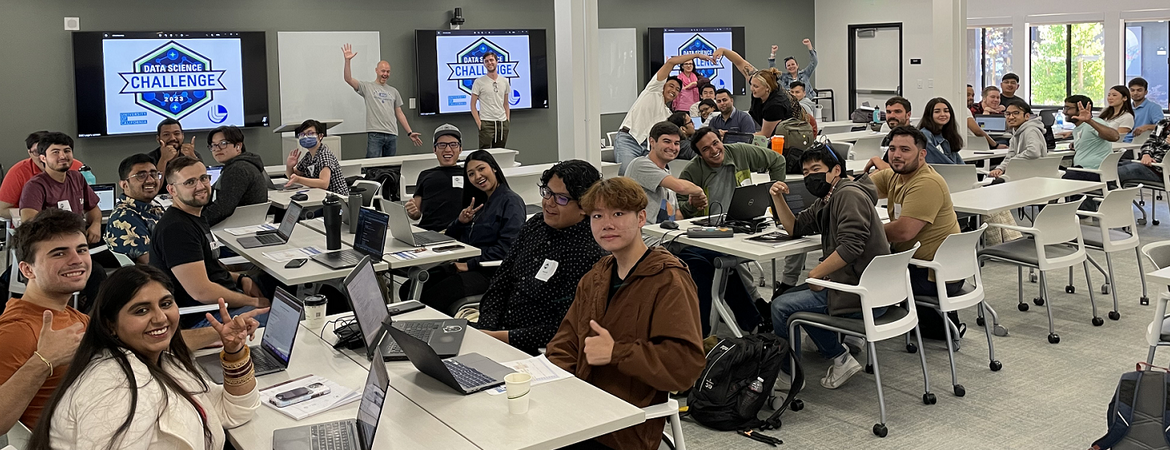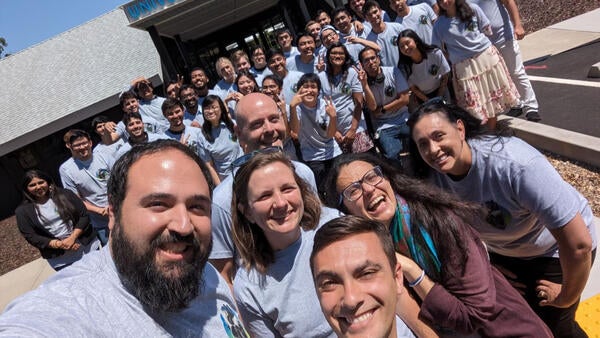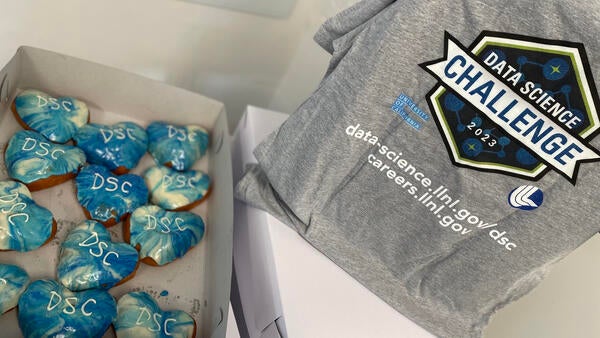
It’s a quick and pain-free way to test for heart problems.
That’s why the electrocardiogram is so often used by doctors—with just a few electrodes and wires, the heart’s electrical activity can be measured and interpreted to identify irregularities and disease. But while it is a highly useful and commonly used diagnostic tool, there are limits to the types of information an electrocardiogram can reveal.
Pushing beyond those limits was the real-world, data-science problem future engineers from the Marlan and Rosemary Bourns College of Engineering were tasked with exploring this summer at one of the foremost research facilities in the world. A group of 35 students from UC Riverside and UC Merced took part in the annual Data Science Challenge held at the Lawrence Livermore National Laboratory (LLNL). It is an intensive, two-week internship that places students into multidisciplinary teams, each with a data scientist and a Ph.D. student as a team lead.
“This experience is targeted towards students who have little to no prior experience in data science and machine learning, and is meant to serve as a ‘crash-course’ in introducing them not only to the basic concepts, but also what it is like to be in the shoes of an LLNL scientist,” said Vagelis Papalexakis, an associate professor in the Department of Computer Science and Engineering and internship facilitator. “I have seen this to be a very effective way of introducing students to data science, and by the end of the program it is impressive to see the student growth, especially in those students who started out with little to no experience.”

Department; Cindy Gonzales, Data Science Challenge [DSC] co-director; (behind Cindy Gonzales) Brian
Gallagher, DSC co-director; Suzanne Sindi, UC Merced Applied Math Department chair; and Kim Budil,
Lawrence Livermore National Laboratory (LLNL) director pose with students in front of LLNL's University of
California Livermore Collaboration Center. (Header photo and this pohoto courtesy of Sira Neily/LLNL)
Students were tasked with exploring data-driven approaches to overcome the limitations of the traditional electrocardiogram. While it is widely used because it is noninvasive and cost-effective, it is inadequate for mapping the heart’s electrical activity in sufficient detail for many clinical applications. Students worked on reconstructing electro-anatomical maps of the heart and combining input from a standard electrocardiogram with advanced machine learning techniques. Such models can be used for heartbeat simulations and more advanced diagnostics of heart conditions.
“It was interesting to explore what type of research is going on in the field of medicine using machine learning and data science,” said Shamima Hossain, a third-year Ph.D. candidate in the Department of Computer Science and Engineering who served as a team lead. “The seminars were beneficial as scientists and other staff came and shared their work. It gave a good insight into what type of projects are going on in the lab.”

Students also participated in tours, seminars, and networking opportunities while learning from technical experts and laboratory mentors.
“In addition to data science skills, the students get a crash course on other things that are essential to engineering, such as teamwork and leadership in the case of team leads, communication skills since they have to present their progress and their final project, and good engineering practices in carrying out a project from end to end,” Papalexakis said.
Hossain said she applied for the challenge, in part, because the electrocardiogram problem aligns with her areas of research, which include data analysis, artificial intelligence, and machine learning.
“It gave us an insight into how and when to apply for internships and jobs and an opportunity to share knowledge and mentor others, gain experience of how to do teamwork, and how to present your work to both technical and non-technical people,” Hossain said.
For more information about the Marlan and Rosemary Bourns College of Engineering and its educational opportunities, visit the Undergraduate Engineering Programs website and its Graduate Engineering Programs website.